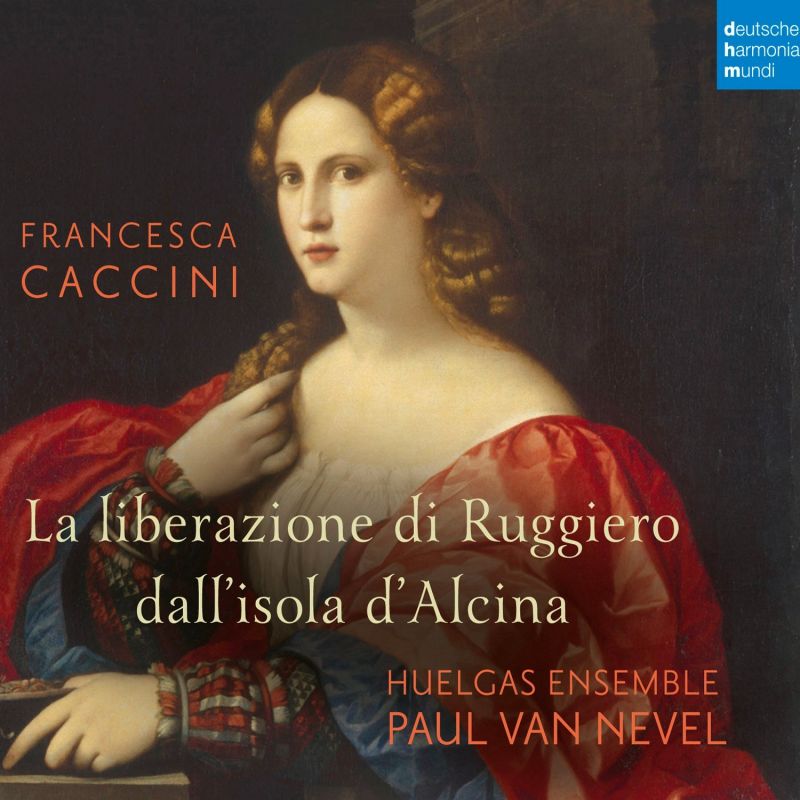CACCINI La liberazione di Ruggiero dall'isola d'Alcina
View record and artist detailsRecord and Artist Details
Composer or Director: Francesca Caccini
Genre:
Opera
Label: Sony
Magazine Review Date: 07/2018
Media Format: CD or Download
Media Runtime: 88
Mastering:
DDD
Catalogue Number: 88985 33876-2

Tracks:
| Composition | Artist Credit |
|---|---|
| La liberazione di Ruggiero dall'isola d'Alcina |
Francesca Caccini, Composer
Achim Schulz, Ruggiero, Tenor Axelle Bernage, Nunzia, Mezzo soprano Bernd Oliver Fröhlich, Vistola Fiume; Pastore, Tenor Francesca Caccini, Composer Huelgas Ensemble Katelijne van Laethem, Siréna, Soprano Matthew Vine, Nettuno; Astolfo, Tenor Michaela Riener, Alcina, Mezzo soprano Paul van Nevel, Conductor Sabine Lutzenberger, Melissa, Mezzo soprano |
Author: Iain Fenlon
The libretto, by Ferdinando Saracinelli, centres on the battle between two sorceresses, Alcina and Melissa, over the warrior Ruggiero, here given a convincing performance by Achim Schulz (a pleasantly light but still authoritative tenor). It would certainly have been familiar to the elite courtly audience gathered to hear the first performance, mounted to celebrate the visit of Archduke Karl of Styria to Florence during the Carnival season of 1625.
Two arias stand at the emotional centre of the work. The first, performed by the Siren, is an exercise in the Renaissance tradition of Orphic song and is persuasively sung here by Katelijne Van Laethem in a dramatic account spiced with a rich vocabulary of embellishment overlaid on an accompaniment characterised by unexpected harmonic shifts. Particularly arresting in its depiction of a mind in despair is Michaela Riener’s delivery of Alcina’s lament at being abandoned by Ruggiero, a second set-piece aria, which is clearly composed in the tradition for such pieces established by Monteverdi’s legendary Lamento d’Arianna.
Beyond that, some of Caccini’s most affecting and effective writing occurs in the self-contained chorus for Alcina’s discarded lovers, transformed into enchanted plants, who plead with Ruggiero not to leave. Both here and in many other places the instrumentalists play with style and sensitivity, and the necessary scoring (the printed rubrics do not solve all the problems) has been applied with skill and imagination (though not all will approve of the added percussive elements such as the triangle, particularly noticeable in the coro di damigelle). La liberazione should finish with a staged dance; but since the score does not include it, Paul Van Nevel has selected a galliard by Salamone Rossi to bring the piece to a close.
Discover the world's largest classical music catalogue with Presto Music.

Gramophone Digital Club
- Digital Edition
- Digital Archive
- Reviews Database
- Full website access
From £8.75 / month
Subscribe
Gramophone Full Club
- Print Edition
- Digital Edition
- Digital Archive
- Reviews Database
- Full website access
From £11.00 / month
Subscribe
If you are a library, university or other organisation that would be interested in an institutional subscription to Gramophone please click here for further information.




